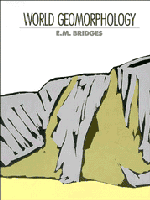3 - Africa
Published online by Cambridge University Press: 05 June 2012
Summary
The area of Africa is approximately 29.78 million km2. It lies astride the equator, extending for 8000 km in a north-south direction from latitude 37°N to 35°S. In the northern hemisphere it is 8000 km from east to west between longitude 18°W and 52°E but in the southern hemisphere it narrows to less than 4000 km. The highest point in Africa is Mount Kilimanjaro (5895 m) and the lowest point is Lake Assal (– 150 m), near Djibouti. Africa has a mean elevation of 580 m above sea level, largely because of the extensive areas of crystalline shield which occupy 37% of the land surface area. Erosional plains cover 30% and depositional plains 26% of the continent's area. Volcanic plateaux amount to 4%, but young and old mountain belts together only amount to 3%.
In the past, geomorphologists have tended to assume the structure of Africa was simple, comprising only one ancient, rigid Pre-Cambrian shield with a coastline lacking in major indentations. In reality, the structure of the continent is complex with younger deposits laid over a composite Pre-Cambrian shield. Various ancient earth movements have affected the shield and on its northern and southern extremities fold mountains trend in a roughly east-west direction.
Africa is now thought of as the terrestrial part of a larger fragment of the Earth's crust which includes the surrounding areas of oceanic crust beneath the Atlantic, Southern and Indian oceans (Figure 3.1.).
- Type
- Chapter
- Information
- World Geomorphology , pp. 30 - 65Publisher: Cambridge University PressPrint publication year: 1990



